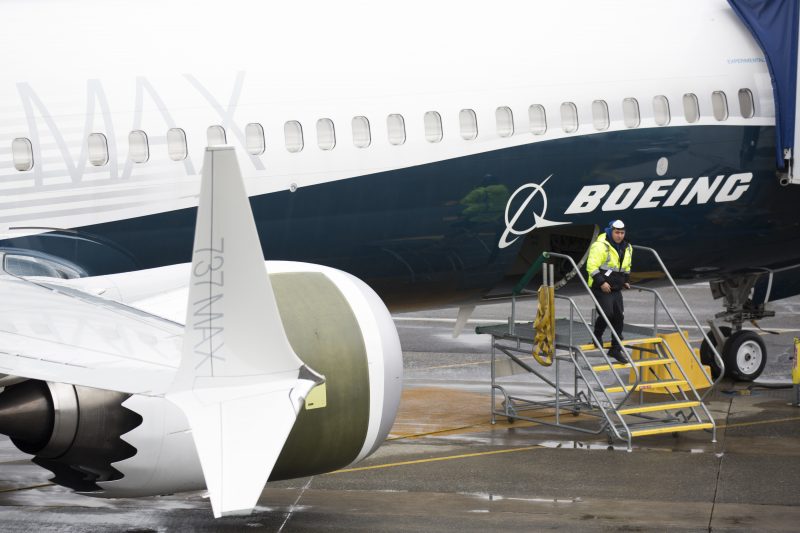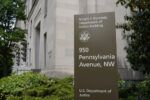US aviation agency defends its vetting of plane involved in crashes
A worker is pictured next to a Boeing 737 MAX 9 airplane on the tarmac at the Boeing Renton Factory in Renton, Washington on March 12, 2019 (Jason Redmond)
New York (AFP) – The US agency that regulates civil aviation said Sunday it followed “standard” procedures in certifying the Boeing jetliner whose anti-stall systems have come under scrutiny after disastrous crashes in Ethiopia and Indonesia.
“The 737-MAX certification program followed the FAA’s standard certification process,” the Federal Aviation Administration said in an email to AFP.
It said its procedures were “well established and have consistently produced safe aircraft designs.”
But reported similarities between the March 10 crash of an Ethiopian Airlines 737-Max, killing all 157 on board, and the Lion Air crash in October of the same plane in Indonesia, killing 189, have raised doubts about the plane.
The 737-MAX is a relatively new plane, having entered service only in May 2017 as Boeing’s answer to Airbus’s medium-haul A320 Neo.
Ethiopian Transport Minister Dagmawit Moges said Sunday that a study of the flight data recorder retrieved from the Ethiopian plane had shown “clear similarities” to that of the Lion Air flight in Indonesia.
She said the parallels would be the “subject of further study.”
– Pilots had complained –
As investigators continue their work, preliminary findings in the Lion crash have focused on a possible malfunction of an anti-stall system known as the MCAS (Maneuvering Characteristics Augmentation System).
Boeing developed that system, because of the unusually forward placement of the plane’s engines, to avoid a stall.
Experts have questioned the FAA’s certification process after learning that American pilots had lodged serious complaints about the system.
According to a Seattle Times report Sunday, the FAA had delegated part of the certification process for the plane — including the MCAS — to Boeing engineers.
But the original safety analysis provided to the FAA by Boeing contained “several crucial flaws,” the newspaper said, adding that the process was carried out hastily as Boeing struggled to catch up with Airbus’s more-advanced work on the A320 Neo.
The report was dated 11 days before the Ethiopian Airlines accident, the newspaper reported.
– ‘All requirements…met’ –
The FAA refused on Sunday to comment on the newspaper report, noting the various investigations still under way.
In the face of budget cuts, the FAA since 2009 has delegated some certification work to aircraft manufacturers or to outside experts, a procedure known as ODA (Organization Designation Authorization).
On Sunday, the federal agency defended its practice, insisting that the 737-MAX had to pass multiple tests and reviews before being authorized to fly.
It said the aircraft’s design was minutely examined, ground and flight tests were conducted, and other civil aviation authorities were consulted to ensure the “airplane complies with FAA standards.”
And a statement provided by Boeing to the Seattle Times said that “the FAA considered the final configuration and operating parameters of MCAS during MAX certification, and concluded that it met all certification and regulatory requirements.”
It said, without elaborating, that there had been “some significant mischaracterizations” of the certification process.
Disclaimer: This story is published from a syndicated feed. Siliconeer does not assume any liability for the above story. Validity of the above story is for 7 Days from original date of publishing. Content copyright AFP.


